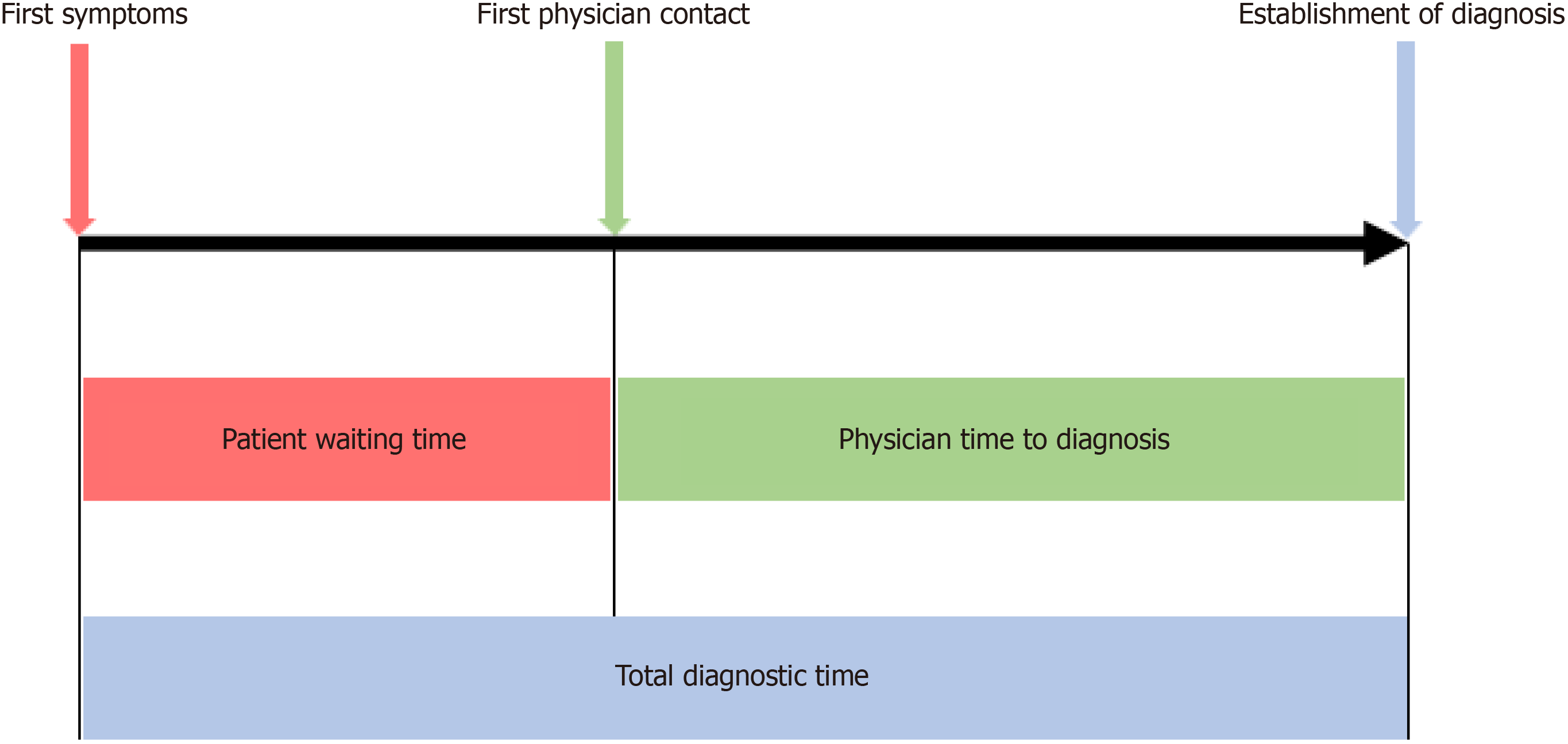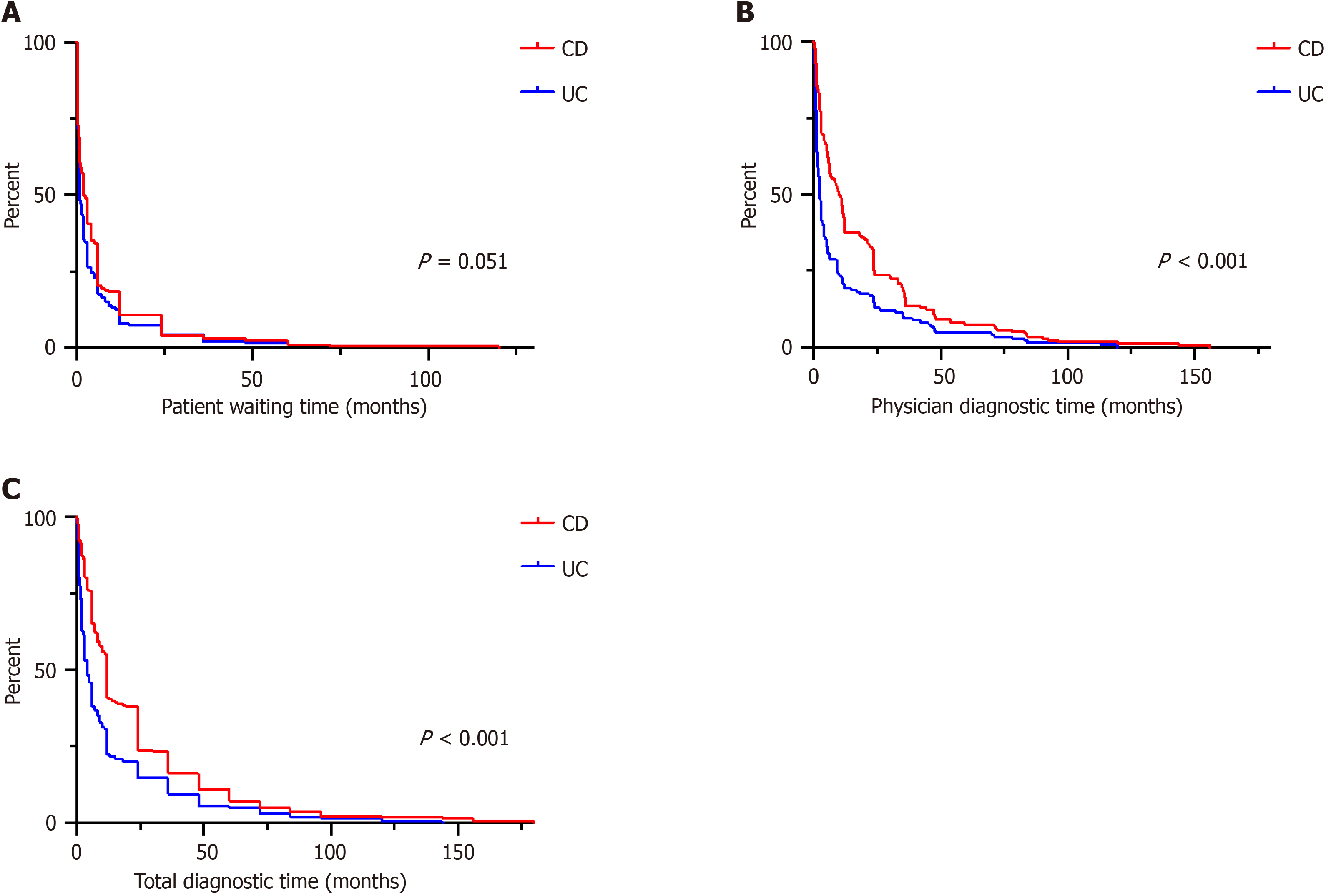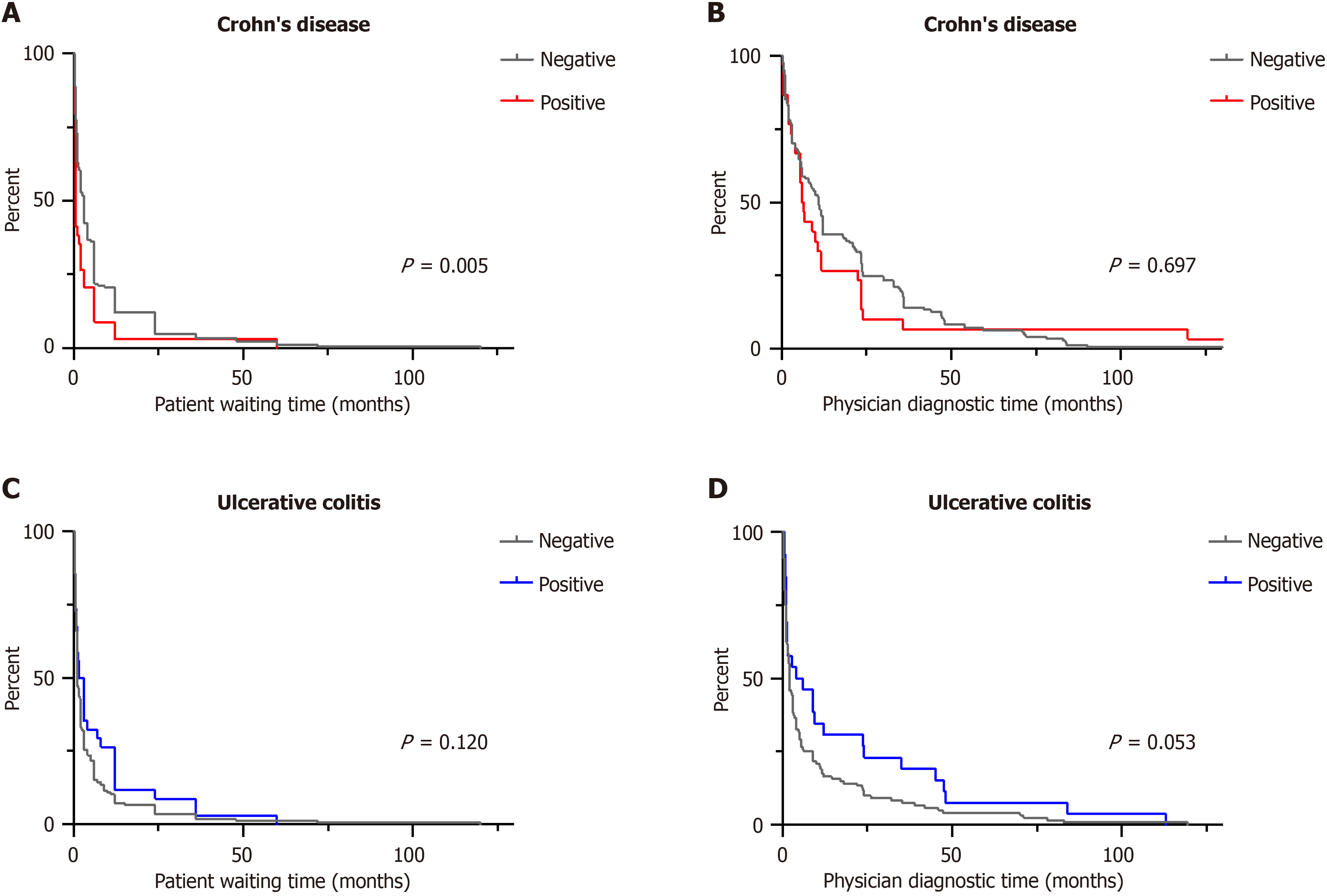Copyright
©The Author(s) 2024.
World J Gastroenterol. Aug 7, 2024; 30(29): 3465-3478
Published online Aug 7, 2024. doi: 10.3748/wjg.v30.i29.3465
Published online Aug 7, 2024. doi: 10.3748/wjg.v30.i29.3465
Figure 1 Diagnostic time intervals.
Based on the patients' questionnaires, three relevant time intervals were calculated: (1) patient waiting time [interval from the first inflammatory bowel disease (IBD) symptoms till consulting a physician]; (2) physician diagnostic time (interval from first physician contact to IBD diagnosis); and (3) total diagnostic time (interval from the first IBD symptoms till establishment of IBD diagnosis).
Figure 2 Diagnostic time in Crohn’s disease versus ulcerative colitis patients.
A: Patient waiting time almost equals in Crohn’s disease (CD) and ulcerative colitis patients; B: Significantly prolonged physician diagnostic time in CD patients; C: Significantly prolonged total diagnostic time in these patients. CD: Crohn’s disease; UC: Ulcerative colitis.
Figure 3 Diagnostic time depending on family history for inflammatory bowel disease.
A: A positive family history of inflammatory bowel disease was associated with reduced patient waiting time in Crohn’s disease (CD); B: But did not affect physician diagnostic time in CD patients; C: A positive family history did not affect patient waiting time in ulcerative colitis (UC) patients; D: But delayed physician diagnostic time in UC patients.
- Citation: Blüthner E, Dehe A, Büning C, Siegmund B, Prager M, Maul J, Krannich A, Preiß J, Wiedenmann B, Rieder F, Khedraki R, Tacke F, Sturm A, Schirbel A. Diagnostic delay in inflammatory bowel diseases in a German population. World J Gastroenterol 2024; 30(29): 3465-3478
- URL: https://www.wjgnet.com/1007-9327/full/v30/i29/3465.htm
- DOI: https://dx.doi.org/10.3748/wjg.v30.i29.3465











